The mission of the ACC is to provide high-caliber quantitative and qualitative chemical analyses to all research projects. The ACC provides hands-on training to enable independent use. Training is offered to all faculty, research technicians, research specialists, post-doctoral researchers, and research scientists. Successful completion of the appropriate training is a prerequisite for the use of all ACC equipment available for independent use.
Comprehensive Metabolomics
At present, metabolomics is applied to investigate several diseases, improve their diagnosis and prevention, and design better therapeutic strategies. In addition, metabolomic studies are also being carried out in areas such as toxicology and pharmacology, crop breeding, and plant biotechnology. The mass spectrometry-based methods such as LC-MS, GC-MS and HPLC-based metabolomics solutions perfectly match the requirements for comprehensive metabolic profiling, sample throughput, compound identification, validation and quantification.
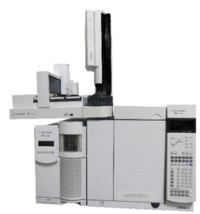
7890A/5975C GCMS System (Agilent Technologies)
- Performs separation capabilities and productivity features such as: EPA 8270, Pesticides in Milk Extract, Impurities in Hydrocarbons, Rapid Drug Screening, Analysis of Refinery Gases, Comprehensive GC Flow Modulation, and more
- An analytical instrument that measures the content of various components in a sample
- Identifying and quantifying volatile organic compounds in:
- Liquids—pesticides, mineral oils such as: waste oils and transformer oils, fatty acids,
- Solids—plastics, sediments, trace compounds, PCBs (Polychlorinated biphenyls), solid waste,
- Separates mixtures into individual components using a temperature-controlled capillary column
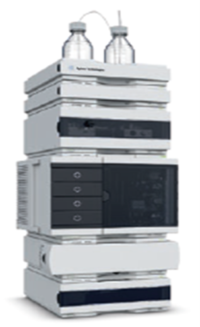
1260 High-Performance Liquid Chromatography (Agilent Technologies)
- Supports acid and alkaline sample matrices and solvents
- For solvent selection and automation in HPLC method development, research and all HPLC applications requiring continuous access to a wide range of solvent choices
- Performs analytical liquid chromatography using all types of current and emergent column technologies
- Has fluorescence and DAD detector which provides the data rate required for high-resolution separations or fast analyses to give you highest confidence in your analytical results
- It can be used to analyze a variety of samples for example: urine, blood, saliva, muscle, drugs and toxins produced by fungi or bacteria and some more.
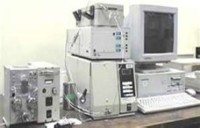
High-Performance Liquid Chromatography (Waters)
Is optimum for the separation and analysis of chemical and biological compounds using UV detector that are non-volatile such as:
- Pharmaceuticals like aspirin, ibuprofen, or acetaminophen (Tylenol)
- Salts like sodium chloride and potassium phosphate
- Proteins like egg white or blood protein
- Organic chemicals like polymers (e.g. polystyrene, polyethylene)
- Heavy hydrocarbons like asphalt or motor oil
- Many natural products such as ginseng, herbal medicines, plant extracts
- Thermally unstable compounds such as trinitrotoluene (TNT), enzymes and others
Inorganics Analysis
The inorganics analysis facility uses variety techniques to determine the elemental composition of variable materials including environmental samples and biological tissues. We also feature instruments such as ICP-OES, IC, CHNS and TOC to determine the elemental composition of environmental samples, biological tissues.
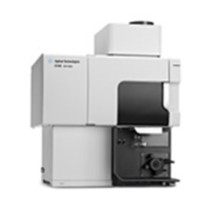
5100 ICP-OES (Agilent Technologies)
- Inductively Coupled Plasma-Optical Emission Spectometer
- With unique Dichroic Spectral Combiner (DSC) technology, axial and radial views of the plasma can be captured
- Suitable for the trace analysis of metal elements (0.0002-1000 ppm) and a limited number of non-metallic elements (e.g., S, P).
- Used in discovering new mineral resources, to controlling quality in food production and pollution levels in water supplies
- The device determines the breakdown of elements in a sample solution by superheating it to 9000C using an argon gas plasma, and then measuring the specific wavelength and brightness of the heated molecules to establish the precise concentration of target elements
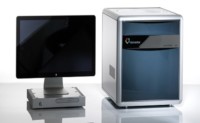
Vario Macro Cube (Elementar)
- Simultaneously determines carbon, hydrogen, nitrogen, sulfur (CHNS) from one sample or a combination of CNS, CHN, and CN as well as optional oxygen and chlorine
- It is suitable for analysis of micro samples, e.g. of fossil fuels, soil, agricultural products or environmental samples
- Quantitative sample combustion at up to 1200°C (1800°C at the point of combustion when tin foil is used)
- Optimized for macro (up to 1.5g soil) sample weight, depending on requirements up to 200mg organic matter
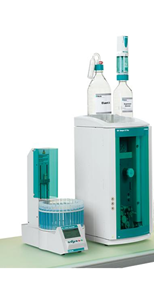
930 Compact IC Flex System (Metrohm)
- Performs the analysis of anions and carbohydrates.
- Used to measure the quality of different types of water samples (e.g,. drinking water, surface and ground water, waste water and sea water).
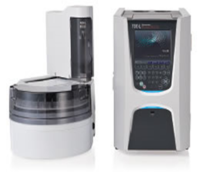
Total Organic Carbon Analyzer (Shimadzu)
- To efficiently oxidize not only easily-decomposed, low-molecular-weight organic compounds, but also hard-to-decompose insoluble and macromolecular organic compounds from LIQUID SAMPLES.
- Used to measure the quality of different types of water samples (e.gl,. drinking water, surface and ground water, waste water and sea water) and chemical samples (e.g., An ammonium salt solution, hydrochloric acid, sulfuric acid, sodium hydroxide and a brine solution)
- Capable of finding Total Carbon (TC), Inorganic Carbon (IC), Total Organic Carbon (= TC-IC), and Non-Purgeable Organic Carbon (NPOC) measurement from these samples
Extremely wide measurement range from 4 μg/L to 30,000 mg/
Organics Analysis
This facility provides a wide range of chemical compounds for both qualitative and quantitative analyses; processes include the accurate mass determination of organic molecules and identification and quantitation of organic environmental samples. We utilize LC-MS, GC-MS, HPLC, CHNS and TOC to conduct for the analysis of soil, water, plant, and other environmental samples including a range of inorganic and organic contaminants.

7890A/5975C GCMS System (Agilent Technologies)
- Performs separation capabilities and productivity features such as: EPA 8270, Pesticides in Milk Extract, Impurities in Hydrocarbons, Rapid Drug Screening, Analysis of Refinery Gases, Comprehensive GC Flow Modulation, and more
- An analytical instrument that measures the content of various components in a sample
- Identifying and quantifying volatile organic compounds in:
- Liquids—pesticides, mineral oils such as: waste oils and transformer oils, fatty acids,
- Solids—plastics, sediments, trace compounds, PCBs (Polychlorinated biphenyls), solid waste,
- Separates mixtures into individual components using a temperature-controlled capillary column

1260 High-Performance Liquid Chromatography (Agilent Technologies)
- Supports acid and alkaline sample matrices and solvents
- For solvent selection and automation in HPLC method development, research and all HPLC applications requiring continuous access to a wide range of solvent choices
- Performs analytical liquid chromatography using all types of current and emergent column technologies
- Has fluorescence and DAD detector which provides the data rate required for high-resolution separations or fast analyses to give you highest confidence in your analytical results
- It can be used to analyze a variety of samples for example: urine, blood, saliva, muscle, drugs and toxins produced by fungi or bacteria and some more.

Total Organic Carbon Analyzer (Shimadzu)
- To efficiently oxidize not only easily-decomposed, low-molecular-weight organic compounds, but also hard-to-decompose insoluble and macromolecular organic compounds from LIQUID SAMPLES.
- Used to measure the quality of different types of water samples (e.gl,. drinking water, surface and ground water, waste water and sea water) and chemical samples (e.g., An ammonium salt solution, hydrochloric acid, sulfuric acid, sodium hydroxide and a brine solution)
- Capable of finding Total Carbon (TC), Inorganic Carbon (IC), Total Organic Carbon (= TC-IC), and Non-Purgeable Organic Carbon (NPOC) measurement from these samples
Extremely wide measurement range from 4 μg/L to 30,000 mg/

Vario Macro Cube (Elementar)
- Simultaneously determines carbon, hydrogen, nitrogen, sulfur (CHNS) from one sample or a combination of CNS, CHN, and CN as well as optional oxygen and chlorine
- It is suitable for analysis of micro samples, e.g. of fossil fuels, soil, agricultural products or environmental samples
- Quantitative sample combustion at up to 1200°C (1800°C at the point of combustion when tin foil is used)
- Optimized for macro (up to 1.5g soil) sample weight, depending on requirements up to 200mg organic matter
